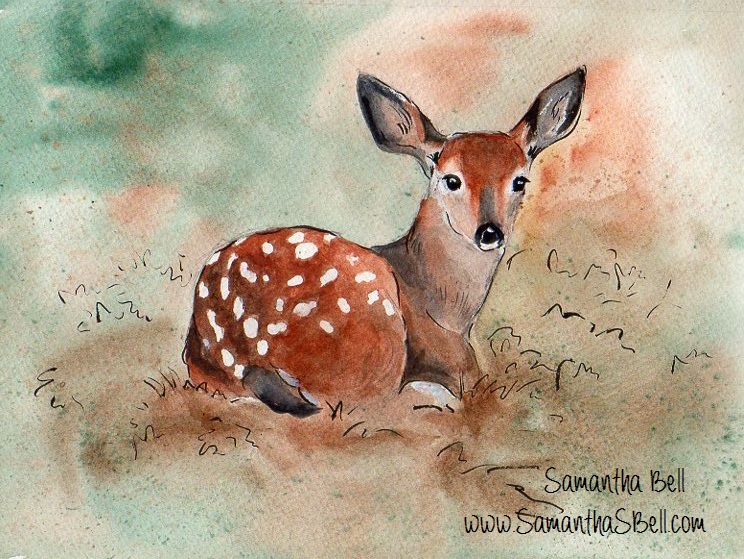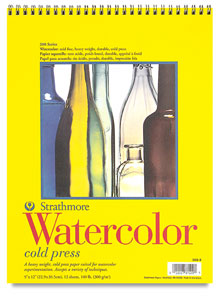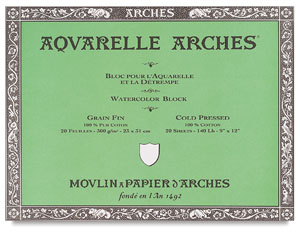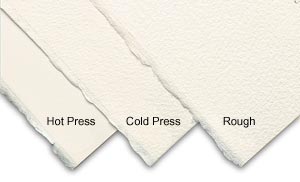
If you are thinking of trying watercolor, you may be a bit overwhelmed. There are so many types of paper available, which kind should you buy?
Watercolor paper comes in pads, blocks, or individual sheets of various sizes. There’s no wrong choice; you’ll want the paper that works best for your project and produces the effect you want to achieve. Generally speaking, the more expensive the paper, the better the quality.
I’ve taken out pages from a watercolor pad for individual use, although they could be kept together as a journal or practice book. With blocks, the pieces of paper are glued to each other around the edges, and can be cut away with a thin tool when you’re finished. An individual sheet of paper may have deckled or straight edges, and a full sheet measures about 22″ x 30″. (Hand-made papers have deckle edges on all four sides, while those made with a mould will have two straight sides.) These large sheets can be cut into smaller sizes for smaller paintings.
Watercolor paper comes in different weights, too, from 90 lb. to 300 lb. The heavier the paper, the thicker it is. The standard weights include 90 lb., 140 lb., 260 lb, and 300 lb. Paper that is 90 lb. is thin and lightweight, making it easy to damage the surface. When I’ve used this paper with my students, I’ve found that just a bit of dabbing will cause it to begin to fall apart. I usually use 140 lb. paper, either in blocks or sheets. Even with this heavier weight, when you add a lot of water to the paper, the lighter-weight papers will tend to bend or buckle.
Some artists stretch their paper first, an easy process that involves wetting the paper, taping it to a board, and letting it dry again before you begin painting. I don’t usually stretch it (I guess I’m always in too big of a hurry to get started), so sometimes I use a heavier paper (such as 300 lb) that won’t buckle as I paint. Sometimes I use a block; the paper in blocks has been pre-stretched, and because it is glued together, the paper will become flat again as it dries. But most of the time I just tape my paper to a flat board (like foam board or gator board) before I start. If it buckles, I leave it taped to the board while it’s drying, and it dries flat.
Watercolor papers also come in three different surfaces, hot press (very smooth), cold press (in between), and rough (very textured). If you are just starting out, begin with cold press, although it is great to experiment with the others to see which you like best. Paper differs from manufacturer to manufacturer, so also try out the various brands. Also, make sure your paper is acid-free and archival-safe – you want your paintings to last.
Do you have a favorite type or brand of watercolor paper?




Please note: Only family-friendly comments will be published.